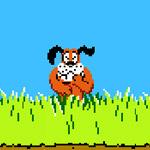It may surprise Victorians to discover that our state is a “world class” hunting destination. Yep, despite our state’s lack of lions, tigers, elephants, buffaloes and razor-backs, the world’s hunters apparently cant wait to take on our ferocious deer, ducks and stubble quail, at least according to our Department of Primary Industries.
New regulations to manage hunting of Victoria’s ducks, stubble quail and deer are being drafted and a regulatory impact statement (RIS) has been prepared. Economists at Large made a submission to the RIS, in conjunction with The Australia Institute. Our key points are:
- The RIS contains severe methodological deficiencies and fails to present evidence within a meaningful context. The approach used in the RIS is inconsistent with general economic practice.
- The RIS claims that benefits of $96m associated with expenditure by hunters should be included, when the correct measure of benefit, consumer surplus, suggests benefits of $10.8m – $17.6m.
- Estimates of costs in the RIS are similarly flawed and ignore the non-market values that Victorians hold for wildlife and natural resources. Surveys of community attitudes to hunting suggest that the vast majority of Victorians are opposed to game hunting on ethical and environmental grounds. The continuation of hunting represents a loss of welfare to this majority of Victorians. Economic studies relating to non-market valuation, including examples from Victoria, suggest that these values are significant. If Victorian households were willing to pay 11 to 19 cents per week to end game hunting, this would outweigh the $10.8m – $17.6m benefits to hunters.
- The result of these errors is that the RIS provides a wild overstatement of the value of game hunting to Victoria. If an approach more consistent with mainstream economic practice was adopted, it would be clear that the value of the regulations to Victoria is small and possibly negative.
You can read our submission here.

